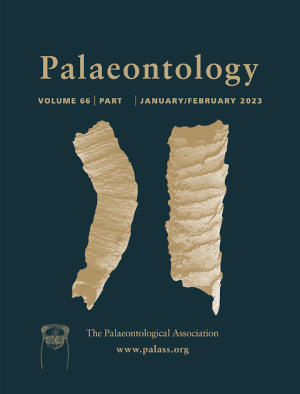Article: Unique dentition of rhynchosaurs and their two-phase success as herbivores in the Triassic
Publication: Palaeontology
Volume:
66
Part:
3
Publication Date:
2023
Article number:
e12654
Author(s):
Thitiwoot Sethapanichsakul, Robert A. Coram, and Michael J. Benton
Abstract
Abstract Rhynchosaurs were key herbivores over much of the world in the Middle and Late Triassic, often dominating their faunas ecologically, and much of their success may relate to their dentition. They show the unique ankylothecodont mode of tooth implantation, with deep roots embedded in the bone of the jaw and low crowns that were rapidly worn down in use. During growth, the main area of oral food processing, located in the middle and posterior portions of the occlusal surfaces of the jaws, moved posteriorly relative to the anterior tips of the jaws, which curved up. As the maxilla and dentary grew by addition of new bone posteriorly, the dental lamina fed in new teeth at the back of the tooth rows. CT scanning of the holotype skull of Bentonyx sidensis from the Middle Triassic of England reveals previously concealed details of the dentition. Together with new dentary material from the same location, this has enabled us to examine the tooth replacement process and elucidate ontogenetic changes in dentition and jaw morphology as the animals aged. There were major changes in rhynchosaur anatomy and function through their evolutionary history, with the early forms of the Middle Triassic dying out before or during the Carnian Pluvial Episode (233–232 Ma), and the subclade Hyperodapedontinae, with broad skulls and adaptations to chop tough vegetation, subsequently diversifying worldwide in a successful ecological expansion until their global extinction 227–225 Ma.
